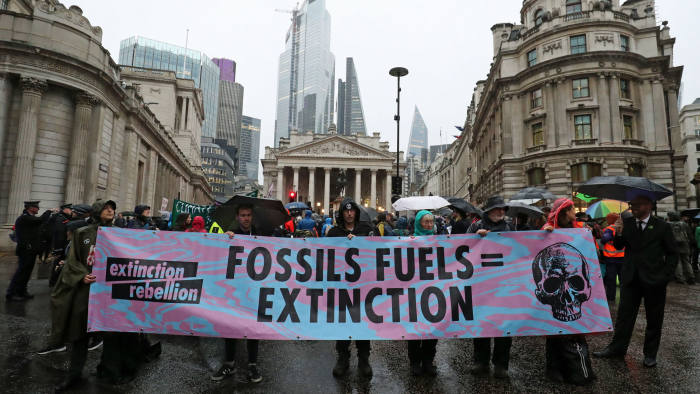The Question
Every century has an important question that organizes the way individuals approach reality. The most important question of this century is, “What does it mean to wake up?” It may seem like a question that the Dali Lama might ask, but waking up may be our only hope of survival. Waking up here means the consciousness of how our behavior furthers our extinction and the extinction of other species. It also means the ability to change and contribute to life.
Imagine a giant cage 7,900 miles across. It took roughly 14 billion years for it to evolve so we could breathe oxygen. The bars on this cage are somewhat permeable, but few try to alter the bars or escape, even though their lives are about to be cut short. Most fear the unknown and prefer sleepwalking to consciousness.
Even on days when the light shines on the lock, most inhabitants won’t attempt to open the cage. Instead, they attach to each other.
Hitler, in the last century, briefly woke people up with a call to arms; 60 million people perished in exchange for pride and property. Picasso captured a moment of this destruction in his painting Guernica. When a German officer purportedly asked him who created this painting, he replied, “You did”.
Our greatest war today is against nature, and secondarily against our own nature as part of the animal kingdom. We threaten every species on Earth with extinction: the inhabitants of the sea, forests, and plains, even our deserts. According to the U.N. Convention on Biological Diversity, 150 species are lost to extinction every day. Yet, we refuse to see, feel and tackle what’s right in front of us. We are sleepwalking. Climate change, for example, is only the most obvious of our challenges. And the next species up for extinction is we.
We can’t seem to wake up to what’s required to survive. Why?

Pleasure and Death
Our instincts for survival are being blunted, not by the usual suspects of media, or conspiracy theorists. But by the domination of our pleasure centers located deep inside our brain. This domination has put us into a tailspin toward death.
Our pleasure centers are more elaborate than first thought. Brain researchers at MIT discovered a circuit in the amygdala—deep brain— that responds to rewarding events. They noted, “Positive-behavior subsets are so abundant in the deep brain, which is contrary to what many people in the field have been thinking for years”(MIT, Brain Research Lab, 2017).
Our economy thrives on shaping and rewarding these pleasure circuits, even if the rewards and behavior are tied to high levels of consumption that are killing a reported 60% of our planet. It is an insatiable hunger, with no clear gating mechanisms or limits. Pleasurable is tied to ‘shop till you drop’; or buy an auto with a V-8 engine that sucks fossil fuel, or eat 10 billion animals yearly; or harvest and eat 400 million pounds of fish daily; consume credit to buy a house that depends on a forest full of trees to build with a 3-car garage.
The average woman, for example, makes over 300 trips to the store annually and spends roughly 400 hours per year shopping; men and women spend an additional 40 hours online shopping per month. While Covid has put a dent in these statistics, there is little reason to believe that without waking up things will change.
Our pleasure circuits, comprised of collections of neurons, are powerful. They are manipulated through the use of symbols that make it cool to consume everything possible. People choose pleasure over life itself. Those that explain this by calling our society “materialistic” miss the point entirely: in a world where pleasure is manipulated by symbols and unwittingly attached to death, the actual concern for the utilitarian functions of a product is secondary. The $400 billion annually that the advertising industry generates to manipulate symbols and our pleasure centers work to dominate our choices.

The cage, mentioned earlier, is gilded with credit and pleasure zones that are addicting, causing profound habitual behavior and essentially, narcolepsy. An entertaining form of mate selection, for example, can occur on Tinder in a matter of seconds, no pheromones or genuinely personal encounter is required. Animals are remarkable because they are delicious. So are trees cut and made into coffee tables or colorful clothes that bleed dyes into streams or plastic into the oceans. Behavior connected to devastation doesn’t seem to matter because its impact is not directly felt and the neurons for pleasure are excited and continue to fire, day in day out.
Ultimately, what’s being blocked are our higher cortical centers involved in critical or reflective thinking—thinking that guides us in accurately testing and assessing our reality. These higher centers need to be re-activated before survival behavior can be triggered. The animals that once chased us and threatened us are nowhere to be found. Facebook, cognitive algorithms, and ad men have replaced them.
The power of domination occurs inside out, as the algorithms mimic our brain. We must all work at breaking the patterns and altering the circuits.
Fear is not transformative
Waking up means finding a piece of reality worth defending, a beach, stream, or green space in a city. This attachment is based on pleasure, not fear. It must be connected to the greater whole. The particular can drive the universal. People need help with the connections to what’s living, not manipulating symbols.
To be more effective, the environmental movement needs to move beyond fear of game over; the cage is going down. All the glaciers are melting; the fires are burning up the land and all the water tables are dropping rapidly. Tell us something that conscious people don’t know already and won’t overwhelm us. Don’t reinforce the debacle.
Fear primarily increases defenses, and people will numb themselves further: the majority of the sleepwalking population will say, it’s too late to do anything anyway. Might as well party, or hang out at home. The key is to alert people to positive gains that are being made in the fight to wake up, no matter how small. The great community activist, Saul Alinsky, once provided solid advice: don’t fight for what you can’t win on; win and move it forward, no matter how small. Tactics are what you have at your disposal to work with.
Rising levels of expectations cause revolutions, not primarily pain. If there is a way out, it requires the knowledge of possibility. This is what is being blocked in the cage; it lacks any semblance of codified real possibility; however, the real possibility is being created all around us. We have all the elements—and evidence– at our disposal to save ourselves and other species. This needs to be tied to the pleasure centers in our brain and reinforced through celebrations of small victories.
The Extinction Rebellion is doing a good job at raising our awareness of issues that are life-threatening, but they could be much more powerful if they would build on the success of others. Where is solar power working economically; and wind farms on land and sea; and more energy-efficient buildings and planning versus destruction of farmlands; and blocking traditional forestry projects and instead, promoting forest certified lumber, and hundreds of successful projects worth mimicking in our communities.

When an environmentalist or indigenous person is killed defending nature, celebrate their life, and get busy with boycotts. Let’s help people move their money out of Wells Fargo and JP Morgan, the largest funders of the fossil fuel industry. Sell your auto with a V-8 engine and forget the myriad of excuses why this isn’t possible.
The social agenda must include recapturing our pleasure centers and strengthening our higher-order critical brain functions. We can think, feel and communicate the pleasure of creating something new that sustains life; gets us beyond the anxiety of the unknown or our own feeling of powerlessness. Fire the circuits of pleasure for different purposes. Change the associations of pleasure and behavior that instills life, not destruction causing consumption. Prepare to leave the cage or transform it to survive—begin to face your anxiety.
By setting an example and helping people wake up—challenging them— you most likely will create an angry or irritated response, no one likes his or her sugar addiction messed with. There are few other ways forward.

Reclaiming your mind
Small steps include:
- Install ad blockers on all media
- Reflect on your own buying behavior; don’t buy what you don’t actually need
- Recycle whatever you can
- Join or open a discussion group on what changes are needed to exit the cage
- Buy organically grown food and eat less: government approved 2,500 calories per day is ridiculous for sedentary work
- Challenge your friends and neighbors to buy less, and/or leave a note on their windshield, you car is driving global warming—sell it
Larger steps include getting more active: - Join Extinction Rebellion or a like organization
- Join Sea Sheppard or Green Peace
- Organize a disruption ceremony: get friends to fill their shopping carts in a supermarket or Wal-Mart and block checkout stands, raising the issue of consumption; or join a die-in at city hall near you
- Read and subscribe to Ad Busters: Create your own anti-commercial commercials. Make it un-cool to buy more stuff
Exit the cage and learn to enhance life in the face of a threatening reality. Begin the switch from consumption to contribute to the commons that we share with each other and other species. The life you save may be your own or those that you love.
